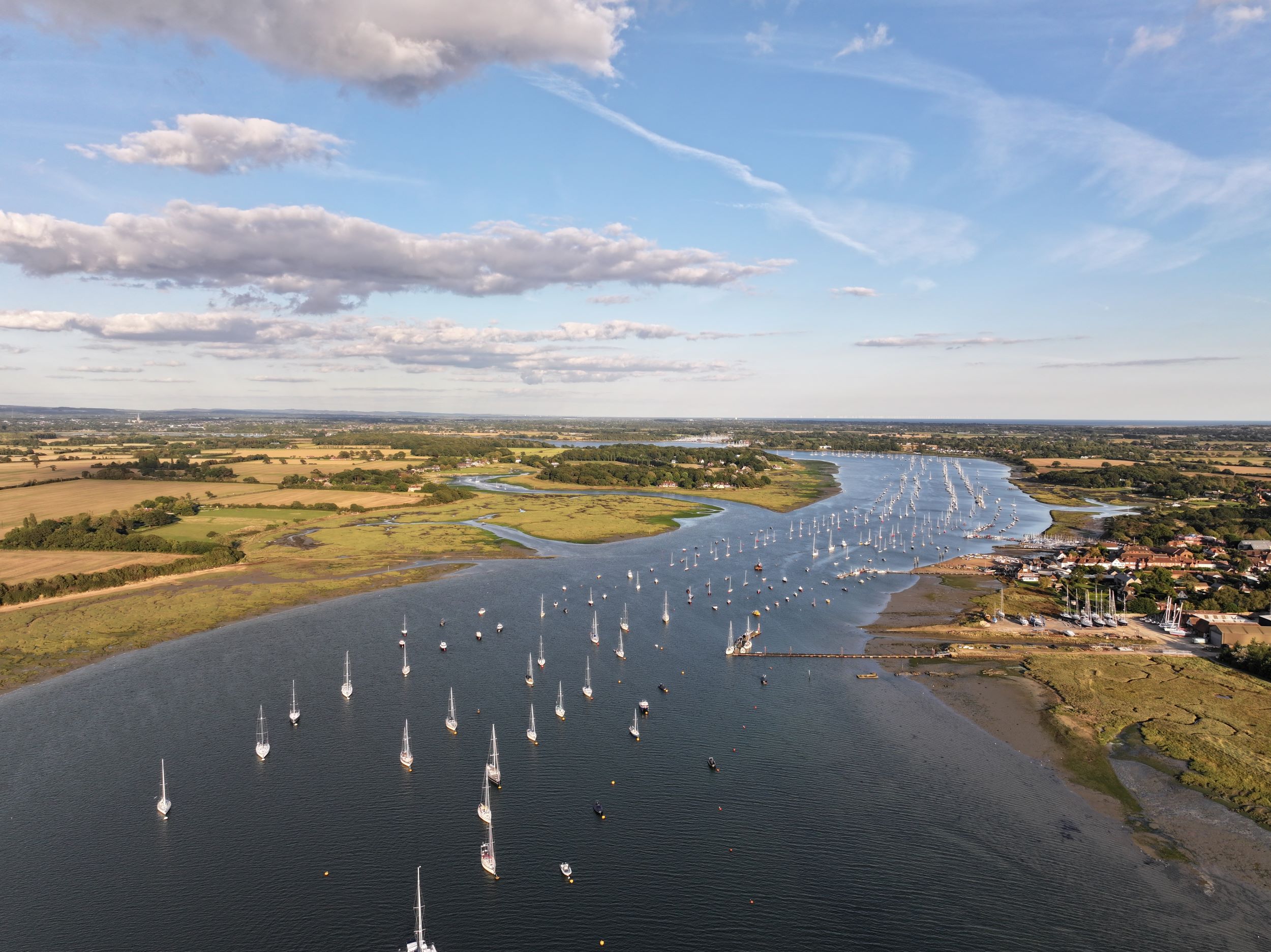Chichester Harbour Conservancy starts work to upgrade Itchenor jetty, creating improved and safer access and facilities for all users. As well as improvements for harbour users, the jetty will form an important link in the new King Charles III England Coast Path, as well as bringing environmental benefits with electric charging points and pump-out facilities.
The planned changes to the Itchenor Jetty include creating better access for all users including pedestrians, wheelchair users, pushchairs and cyclists. A new elevated access ramp will be safely accessible at all states of tide, making it easier to board the Itchenor Ferry and harbour tour boat services.
A new section will be added to extend the existing jetty capacity, creating new walk-ashore berthing for visitors and local vessels. The extended jetty will enable visitors to leave their boats and visit local amenities including pubs, cafes, boatyards and harbourside footpaths. Shoreside shower and toilet facilities will also be refurbished.
Chichester Harbour Conservancy CEO, Matt Briers said: “Chichester Harbour is one of the busiest leisure harbours in Europe as well as a nationally important site for nature. We have a responsibility to provide accessible facilities to support harbour users. There is an increasing demand for walk-ashore services amongst boaters and sailors and we are pleased to provide excellent facilities here at Itchenor.”
The jetty will also form part of the official King Charles III England Coastal Path when the Chichester Harbour section opens in 2025. The route will direct walkers between Bosham Hoe and West Itchenor, crossing the harbour aboard the Itchenor Ferry. The inner section of the jetty will be reserved for the Itchenor Ferry and harbour authority vessels, providing a safer waiting experience for ferry passengers away from boat movements on the outer section.
Kevin Dewitt, West Sussex County Council Project Officer for King Charles III England Coast Path commented: “The jetty improvement works planned for the West Itchenor to Bosham ferry tie in perfectly with the recently approved stretch of the King Charles III England Coast Path (KCIIIECP) between East Head and South Hayling. The improvements to the jetty will provide better access to people of differing abilities and give the public more opportunity to enjoy the stunning landscape that Chichester Harbour has to offer.”
As well as improving access for boats, walkers and cyclists, the new jetty brings environmental benefits. There will be the facility to charge electric vessels and a state-of-the-art pump-out facility to manage sewage from vessel holding tanks.
Chichester Harbour Conservancy’s proposal to extend the jetty facilities at Itchenor received approval from the Marine Management Organisation (MMO) following a robust and rigorous licencing process including a public consultation. The process also included engagement with the Maritime and Coastguard Agency, Trinity House and the Royal Yachting Association. Natural England and Chichester District Council have also approved the proposal.
Chichester Harbour Master, Captain Jo Cox remarked: “The improvements to the Itchenor Jetty will increase capacity for vessels visiting the harbour, benefitting the local community and all harbour users. It will improve safety for ferry passengers and access for all in the Chichester Harbour National Landscape.”
FAQ’s
Why are changes being made to Itchenor Jetty?
Itchenor Jetty is being upgraded to improve access for all users and to improve facilities for local and visiting boats. The changes include a new access ramp, extension of the outer jetty area and refurbishing of toilets and showers.
When will the work take place?
All of the access improvement and jetty extension work will be carried out in October/November 2024. The refurbishment of the toilets and showers will be completed over the winter. All of the new facilities will be in place by spring 2025.
Will the work effect wildlife and nature?
Chichester Harbour is an important site for nature in the UK and the works are being managed to reduce the impact to the environment. Methods to minimise environment impact include, only working during daylight hours, using a limited number of piles and installing them using Vibro piling methods to minimise noise disturbance.
